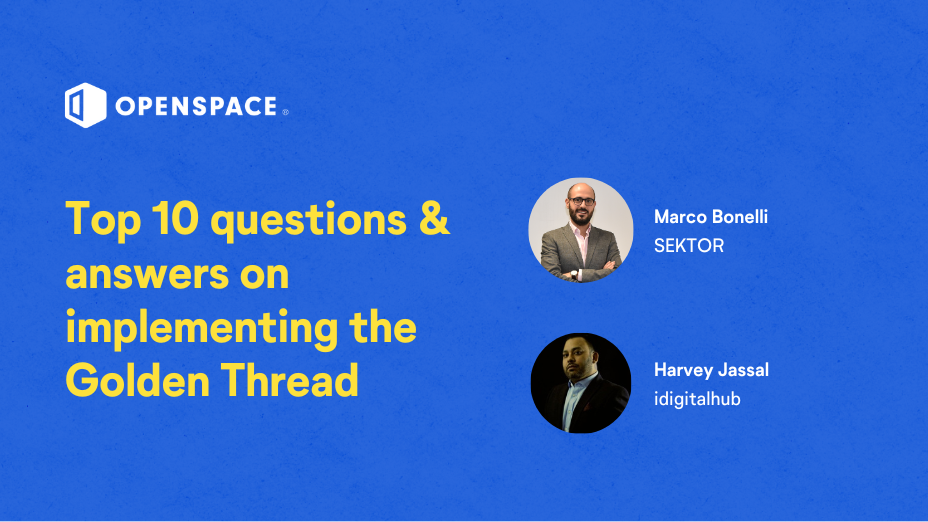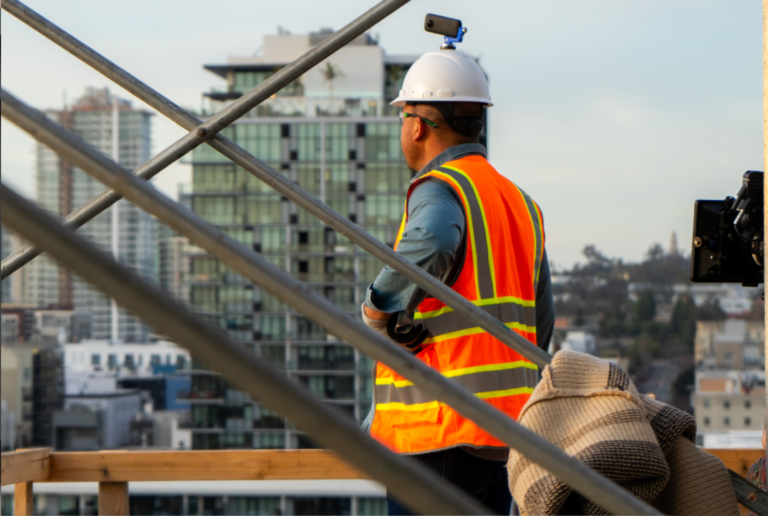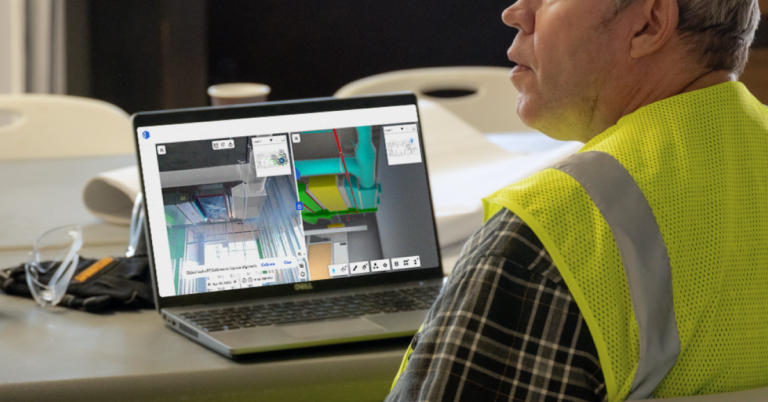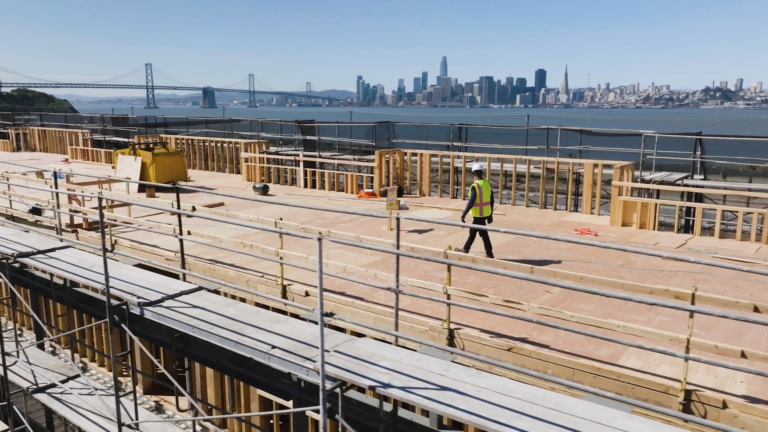Following the Grenfell fire in 2017, the UK government appointed Dame Judith Hackitt to lead an independent review of building regulations and fire safety. In her report, “Building a safer future,“ published in 2018, she recommended a Golden Thread of high-quality information—a complete record of a building’s design, construction, and maintenance information to ensure the safety of the building and the people living in it, now and in the future.
To gain a better understanding of what this means for construction companies, we sat down with industry experts from Sektor and idigitalhub. The result is the following comprehensive list of our answers to the 10 most asked questions from the industry.
Meet our experts
Marco Bonelli is VP of Product and Digital at Sektor and previously spearheaded technological innovation at Vinci Construction UK. With more than 10 years of experience in the industry, he focuses on implementing technological solutions for construction and real estate.
Harvey Jassal has been working in the construction industry for more than 15 years and is the Director of idigitalhub. The professional service company helps clients to digitize their assets and record buildings digitally for compliance and governance purposes, including fire safety.
Top ten questions on the Golden Thread and how to get started
1) What buildings does the Golden Thread apply to?
The Golden Thread applies to all higher-risk residential buildings (HRRBs), which include buildings above 18 meters in height or with at least seven storeys, and two or more residential units.
2) Who is responsible for implementing the Golden Thread?
The law places legal responsibilities to those people who are participating in the design and construction process, the so-called “Duty Holders.”
Post-construction and once the buildings are occupied, the building information needs to be kept up to date by those who are responsible for managing the structural and fire safety of existing buildings. Those are the so called “Accountable Persons.”
3) When will the Golden Thread be fully implemented, and by when do I need to comply with the legislation?
The Building Safety Act was passed as a law in April 2022. One of the key requirements of this bill is the Golden Thread information which has been divided into three transition points or gateways.
Gateway one was implemented in August 2021. It ensures fire safety is a consideration at the design stage and requires a developer to submit a fire statement in order to get planning permission.
At gateway two, building control approval must be obtained from the Building Safety Regulator before building work starts. Applicants will have to demonstrate how they will comply with the golden thread requirement.
Gateway three will occur at completion/final certification when all relevant documents and information will be handed over to the building owner. Construction takes place between gateways two and three. Gateways two and three for new builds are expected to come into force in October 2023.
A Golden Thread of relevant information must be implemented between gateways two and three and maintained thereafter.
4) What do builders have to document to comply with the Golden Thread?
Builders need to document everything that is defined as “critical details,” or everything that is related to the security and the fire security of the building. As of now, there is no specific list of construction elements this requirement refers to, so our experts recommend that businesses document as much as possible, from interior to exterior (especially the facades), at different stages of the construction process.
5) What format needs the documentation be in to comply with Golden Thread criteria?
The Building Safety Act does not specify the format or any particular technology that must be used to document critical information to comply with the Golden Thread. However, there is a list of requirements that should be kept in mind. Information must be:
- Digital
- Structured
- Easily accessible
- Securely stored
- Time stamped
- Possible to update over time
6) Is it possible to use smartphones for building safety documentation?
Technically, yes. However, our experts do not advise relying solely on smartphone photos for one simple reason: While they are digital, a bunch of smartphone photos are not automatically structured or easily accessible by everyone. Setting up a documentation system based solely on photos requires a lot of additional administrative and processing work. There are easier and more comprehensive methods than this to achieve the desired result.
“Information needs to be digital and structured. Capturing a photo with an iPhone, yes, you have digital information but it’s not defined in a structured way.”
Marco Bonelli, VP of Product and Digital at Sektor
7) What happens if I do not create documentation according to the Golden Thread?
Once Gateway 2 and 3 come into law in October 2023, they become a potential hard stop in the construction process, supervised by building safety regulators. If critical information is not available or has not been documented in an easily accessible, structured way, the building cannot be handed over and contractors risk having to go back and re-record all relevant information. This can be a very time-consuming and expensive process that can easily be avoided with the right tools and processes in place.
8) What should I consider before starting building documentation?
Marco Bonelli is actively working to help construction and real estate companies set up the right documentation processes internally. He recommends defining an internal process per project by answering the following questions:
- What are we going to capture?
- When and with what frequency are we going to capture?
- What pieces of information do we want to document per capture? What does our field note structure look like?
- What does a proof of concept for this project look like?
Once the answers to those questions become clearer, companies should think about the technology and specific tools they want to use in order to achieve the most comprehensive documentation in the simplest and easiest way.
9) Given the lack of pre-defined formats and technologies, how can construction companies get started with building documentation?
Once the internal process has been defined, it’s time to think about the technology to use for documentation. For Marco Bonelli, it’s clear that reality capture must be a fundamental part of the Golden Thread documentation to really fulfill all legal requirements.
Harvey Jassal from idigitalhub agrees. He tested different approaches before settling on his current process using OpenSpace 360° reality capture.
Here is a sample workflow for documenting a facade that has been working well for his clients:
Step 1 – Use an existing CAD plan and divide the plan into subsections.
Step 2 – Take a 360° capture within each section across relevant dates throughout the building process—usually before, during, and after work is being carried out.
Step 3 – Use OpenSpace Field Notes to append relevant information and notes to your 360° capture and to tag or assign tasks.
Step 4 – Images are automatically time-stamped and located on the plan; using the OpenSpace Split View feature, teams can easily showcase the work that has been carried out.
10) Is it possible to get sign-off on building documentation from regulatory bodies digitally?
In most cases, getting a sign-off from regulatory bodies on a building’s safety documentation would involve a site visit and inspection. Using the approach outlined above, however, idigitalhub has managed to become the first company in the UK to use digital documentation to procure digital sign-off from London’s Metro Safety and Fire Brigade project for fire safety compliance.
According to Harvey, “Pictures don’t lie. It is what it is, it’s there!” What has really made the difference for Harvey was that with this approach, every fire engineer or other organisation that needs access can see the before-and-after view, side-by-side, with a clearly defined date and time.
Where to go for further Information
At the time we spoke to our experts, there were still gray areas when it comes to the implementation of the Golden Thread principles. While both are hoping to hear about clearer defined principles and rules around site documentation as Gateway 3 implementation approaches, they also agreed on one key recommendation: Start defining and implementing a good process for your team now and aim to cover as much as possible in your documentation. With Gateway two and three coming into force in October, companies can expect more inspections from authorities. Better to get ready!
There’s never been a better or more important time to start a journey of digital transformation, and OpenSpace is here to partner with you at any starting point. You can learn more about the Building Safety Act, the Golden Thread, and how reality capture can support your business to improve compliance by reviewing these resources:



